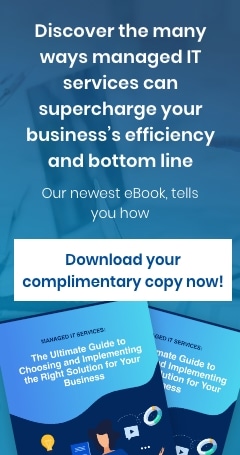One of the biggest challenges faced by nonprofit organizations today is keeping their staff connected when so many of them are working from home due to concerns about the COVID-19 pandemic. A study found that 69% of nonprofits are considering long-term remote work. This means that in 2022 and beyond, remote work-related challenges will remain as the pandemic continues to pose uncertainties.
Because of this, many nonprofits have had to change the way they deal with volunteers, donors, various communities, and other nonprofits. Many have adapted to new ways of working, but others haven’t. Fortunately, nonprofits today can solve their most common workflow challenges using a few workarounds and the right IT tools.
Recruiting volunteers
Even before the pandemic, recruiting volunteers and retaining talent has been a challenge for nonprofits, especially those with offices in various regions. This is largely because in-person interactions have been significantly reduced in many parts of the world.
What nonprofit leaders can do is reach out to potential volunteers using a variety of available technology tools such as social media, mobile apps, and the like. That way, nonprofits can spread their message to a much wider audience while staying safe from COVID exposure.
Nonprofits also need to communicate clearly about what tasks they actually require, whether it’s corporate sponsorships, cash or material donations, or endorsements, and let their supporters know of all the ways they can contribute. This means not just asking for donations, but also informing people about volunteer opportunities at their organization.
Fundraising
Nonprofits are increasingly turning to technology to help them raise funds. Some of the most widely used fundraising technology tools nonprofits use — regardless of where donors are located — include text-to-donate services, voter engagement applications, social media platforms, mobile apps for nonprofits, and their own websites.
Internal communications
Nonprofits with a distributed workforce may struggle managing staff and conducting meetings where they can discuss various agendas. Luckily, they have access to numerous online communication platforms so staff can stay connected and informed about what is happening at the organization.
Nonprofits can use Slack, Microsoft Teams, Google Chat, and Skype, each of which has distinct advantages and disadvantages. For example, Slack is great for real-time communication, but it can be expensive for organizations with a large number of employees. Microsoft Teams may be a better choice for those that need a way to archive conversations. Google Chat is good for smaller organizations or those with limited funding because it is free to use.
Engaging communities
For charitable organizations, building relationships with different communities is crucial in encouraging support for their causes. This helps to create a two-way communication system in which the community can provide feedback to the nonprofit and the nonprofit can provide updates about their work to the community. One way nonprofits can engage with communities is through email newsletters.
Newsletters are a great way to keep people posted on a nonprofit's latest projects and events. They can also be used to promote specific campaigns or causes that the organization supports. In addition, newsletters are an inexpensive way to raise money for nonprofits. This is because people are more likely to donate when they are reminded of the work that a nonprofit is doing.
Conducting online events
To conduct virtual events, charitable foundations can use tools like Google Hangouts, Skype Meetings, Facebook Live, and plenty more. For nonprofits with larger audiences, YouTube is one of the best options to use because people can easily subscribe to nonprofits' YouTube channels and be automatically informed about upcoming events.
Another advantage of using YouTube for this purpose is that nonprofits can embed their videos on other websites. This makes it easy for nonprofits to reach out to a large number of potential supporters who do not visit the organizations’ website.
Centralizing data management
In order to be efficient and transparent, nonprofits need to have a centralized data management system. This system should allow nonprofits to track the progress of their work so they can make informed decisions about the direction of their organization. This can also help nonprofits track the amount of money they are raising and how it is being spent.
Microsoft Excel and Google Sheets are the most commonly used tools for this purpose. However, there are also a number of cloud-based applications that nonprofits can use such as Salesforce, which is commonly used by for-profit companies. These applications allow nonprofits to access their data from any device with an internet connection.
With the right technology, your organization in New Jersey can cope with these challenges more easily than before. Team up with a reliable IT partner like Online Computers so we can set up the right technology tools that your nonprofit needs to stay resilient now and in the future. Get in touch with our team today.




